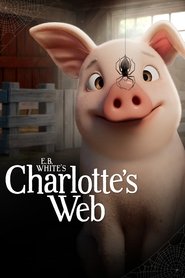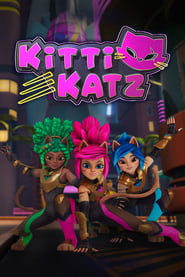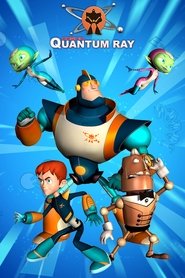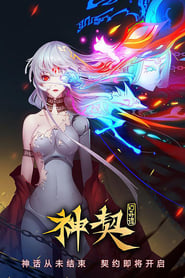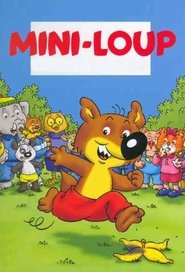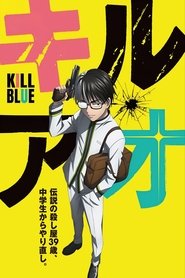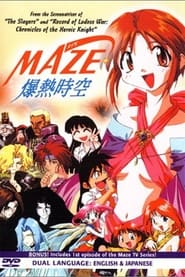Popular Animation TV Series - Page 342
-
E.B. White's Charlotte's Web
2025
star 8When farm pig Wilbur learns he is being raised for slaughter, barn spider Charlotte writes messages in her web to convince the farmer to let him live. -
Animanimals
2013
Animanimals
2013
star 7The Animanimals are animals with little quirks. Each time, a different animal faces an absurd adventure that could only happen to them. -
Tabaluga
1997
Tabaluga
1997
star 6.4Flying Bark Animation produced an animated cartoon series of Tabaluga. In this series, Tabaluga is the last of the dragons and the crown-prince of Greenland, a magical place inhabited by talking animals of many different species. Tabaluga must defend his home from two rival kingdoms on either side of Greenland; a frigid arctic tundra, ruled by the evil snowman Arktos and a searing desert, ruled by an evil sand-spirit named Humsin. -
The Super Powers Team: Galactic Guardians
1985
star 8.2The Super Powers Team: Galactic Guardians is an American animated television series about a team of superheroes which ran from 1985 to 1986. It was produced by Hanna-Barbera and is based on the Justice League and associated comic book characters published by DC Comics. -
Bad Dog
1998
Bad Dog
1998
star 6Focuses on the Potanski family and their dog Berkeley. Whenever Berkeley is told that he is a bad dog, he freezes and pretends to be dead until someone tells him he is a good dog. -
Kitti Katz
2023
Kitti Katz
2023
star 7.6Three teenage girls transform into fierce feline superheroes to save the world from an evil Egyptian goddess — and still have time for soccer practice. -
The Adventures of Rocky and Bullwinkle and Friends
1959
star 9Rocky, a plucky flying squirrel and Bullwinkle, a bumbling but lovable moose, have a series of ongoing adventures. -
Amazing Khoma's Adventures
2005
In each episode Khoma and his friend Gopher meet different troubles and they manage it thanks to their friendship. -
Cosmic Quantum Ray
2010
Cosmic Quantum Ray
2010
star 7"Cosmic Quantum Ray" is a zany comedy-action-adventure series that brings the strange corners of the universe to the world of Earth teenager Robbie Shipton. Robbie represents Earth as a member of Team Quantum - an elite, eccentric team of heroes that saves the Universe almost every day, and hopefully in time for Robbie to get to his third-period Science class! -
Good Vibes
2011
Good Vibes
2011
star 7.2Transplanted Jersey boy Mondo and his best buddy Woodie live out their California dreams in the colorful beach community of Playa Del Toro, where the likeable, down-to-earth duo search out the wildest parties, prettiest girls and biggest waves. While Mondo tries to look the part among the tanned, sculpted rich kids, his portly frame is sometimes a source of embarrassment, especially when he tries to impress super-cool Jenna. Through thick and thin, however, Woodie and his heart of gold is always by Mondo's side. "I've never had a bro before,'' Woodie says. "I've always been kind of a loner, but it's fun being loners together.'' -
The Fonz and the Happy Days Gang
1980
star 8The Fonz and the Happy Days Gang is an animated television series produced by Hanna-Barbera and Paramount Television and originally broadcast from November 8, 1980 until September 18, 1982. -
The Legend of Ancient Soul
2017
star 10Years ago, the gods fought against each other before being sealed away. However their artifacts remained in the souls of the HuaXia clan as part of a contract and hope that someday in the future, they will awaken once more using those artifacts. -
ALF: The Animated Series
1987
star 6.3ALF: The Animated Series is an animated cartoon spin-off based on the live-action Sitcom series ALF. It premiered on September 26, 1987 and ran for 26 episodes. ALF Tales was a spinoff from the series that ran on the NBC television network on Saturdays from August 1988 to December 1989. The show had characters from that series play various characters from fairy tales. The fairy tale was usually altered for comedic effect in a manner relational to Fractured Fairy Tales. -
Mini Wolf
2012
Mini Wolf
2012
Mini-Wolf and his fun-loving pals friends are always on the look out for a new adventure -- even if it includes a little bit of mischief. -
Kill Blue
0000
Kill Blue
0000
-
Maze
1996
Maze
1996
star 6.7Transported through time and space, Maze has gained incredible powers... and one astronomical problem. Every night, she transforms into a lecherous man! To top it all off, she must rescue a princess from a mysterious warrior cult. But male Maze would rather be chasing the ladies... -
Praise Petey
2023
Praise Petey
2023
star 6Petey is a New York City “it” girl who has it all until her life comes crashing down around her. As luck would have it, a mysterious gift from her father gives her a new lease on life: she’s going to “lean into” modernizing his small-town cult. -
なりヒロwww
2014
なりヒロwww
2014
-
Boys be...
2000
Boys be...
2000
star 4.8Boys Be... is a manga created and written by Masahiro Itabashi and illustrated by Hiroyuki Tamakoshi, which was in 2000 adapted into a 13 episode anime series by Hal Film Maker. Three different Boys Be... manga series were serialized by Kodansha in Shukan Shōnen Magazine. In 2009 Kodansha announced a fourth series, Boys Be... Next Season, starting in the November 2009 issue of Magazine Special. The second manga series is licensed in North America by Tokyopop. The anime first aired on WOWOW in April-June 2000. It was licensed by The Right Stuf International. The first DVD volume of the series was released in North America on February 28, 2006. Comcast and several other cable providers have shown Boys Be On Demand in the United States through the Anime Network. This series was aired on AXN-Asia before it handed all anime broadcasting duties to ANIMAX Asia, and, unlike other AXN anime making it to ANIMAX, was never retained. It also aired on Spanish networks Jonu Media and K3.
 Netflix
Netflix
 Amazon Prime Video
Amazon Prime Video
 Apple iTunes
Apple iTunes
 Apple TV Plus
Apple TV Plus
 Disney Plus
Disney Plus
 Google Play Movies
Google Play Movies
 Paramount Plus
Paramount Plus
 Hulu
Hulu
 HBO Max
HBO Max
 YouTube
YouTube
 fuboTV
fuboTV
 Peacock
Peacock
 Peacock Premium
Peacock Premium
 Amazon Video
Amazon Video
 The Roku Channel
The Roku Channel
 AMC+
AMC+
 Kocowa
Kocowa
 Hoopla
Hoopla
 The CW
The CW
 Vudu
Vudu
 Starz
Starz
 Showtime
Showtime
 PBS
PBS
 Pantaflix
Pantaflix
 FXNow
FXNow
 Tubi TV
Tubi TV
 Kanopy
Kanopy
 Comedy Central
Comedy Central
 Crunchyroll
Crunchyroll
 Microsoft Store
Microsoft Store
 Redbox
Redbox
 Sun Nxt
Sun Nxt
 ABC
ABC
 DIRECTV
DIRECTV
 Crackle
Crackle
 Fandor
Fandor
 Plex
Plex
